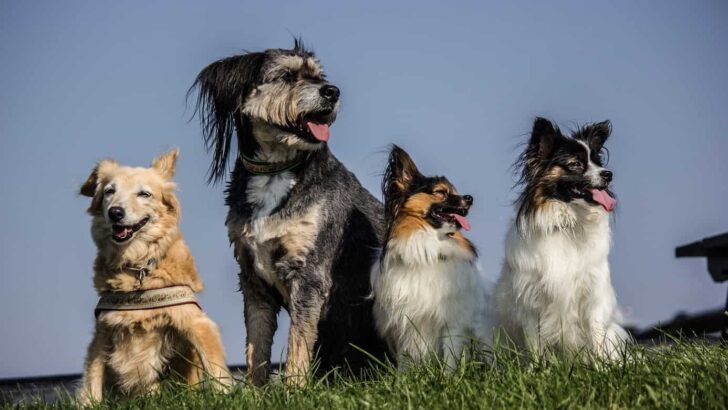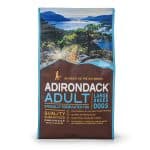- Nom Nom Dog Food Subscription Review - November 7, 2023
- 7 Best Dog Bed Ideas For Great Dane (DIY Options) - July 16, 2022
- Top 5 Rated Best Non-Prescription Diabetic Dog Food - July 15, 2022
You talk it out with your roommate. Your husband eventually relents… You’ve finally been swayed by the local adoption events at your local farmer’s market, and have done your research on if you’re ready to be a dog owner.. Congratulations! You’re getting a dog!
But now what? Picking out a cute collar and fuzzy dog bed is the easy part. But picking out a dog breed can be a lot tougher. Take a deep breath. We got this.
How to Choose A Breed
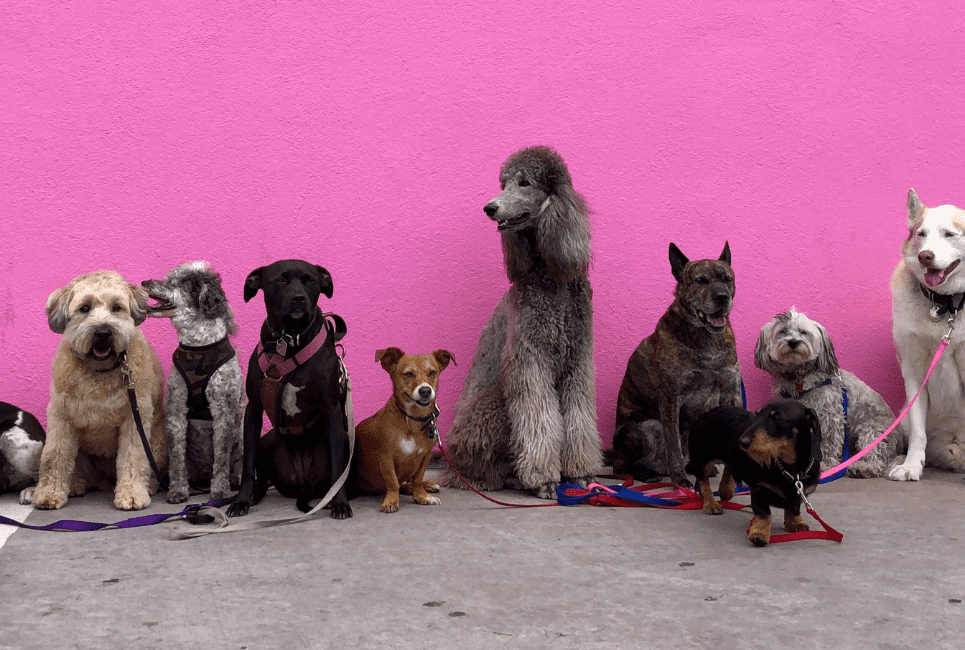
Before you start scrolling through Instagram or creating Pinterest boards and before you ever commit to a dog breed, you have to take a brutal look at your own life.
Are you an active family? Do you like to hike, fish, travel, and play? Or are you more of a relaxed and easygoing household? Is your husband a neat freak who needs to make sure the floors stay as pristine as possible?
What about your current living situation. Would a certain size of dog be better for you at this point? The good news is, there is a potentially perfect dog breed for you!
Activity Level
With young kids and active families, the Labrador Retriever and Golden Retriever have always been solid standbys. But did you know Australian Cattle Dogs and Bernese Mountain Dogs are also great pets for particularly active families?
Maybe the kids are grown and you and your wife are enjoying the prime of your life. You aren’t exactly running marathons, but you’re looking to add a playful pup to your home? The highly intelligent Poodle (which ranges from the large standard size down to the tiny toy), the low maintenance Boston Terrier, and the easily portable Pomeranian all make great companion pets.
It’s important to find a breed of dog that will match your activity level so that you aren’t being run all over the place and the dog is the happiest too.
When thinking about activity levels, remember also that the age of dog you get will play a factor.. puppies will almost always have a lot more energy than if you decide to adopt an older dog. So both breed and age of dog should be a good fit.
Living Situation
Think also about your living situation. It can be difficult to have a happy giant breed dog in a small apartment, however some smaller breeds prefer smaller spaces.
Some breeds by their nature and intellect and will require more supervision or attention during the day, or more home doggy proofing than others..
Think also about restriction your living space might have on certain breeds. Some apartments or renters restrict some breeds based on reputation, so it’s important to do your research here.
Mix Breeds vs. Pure Breeds
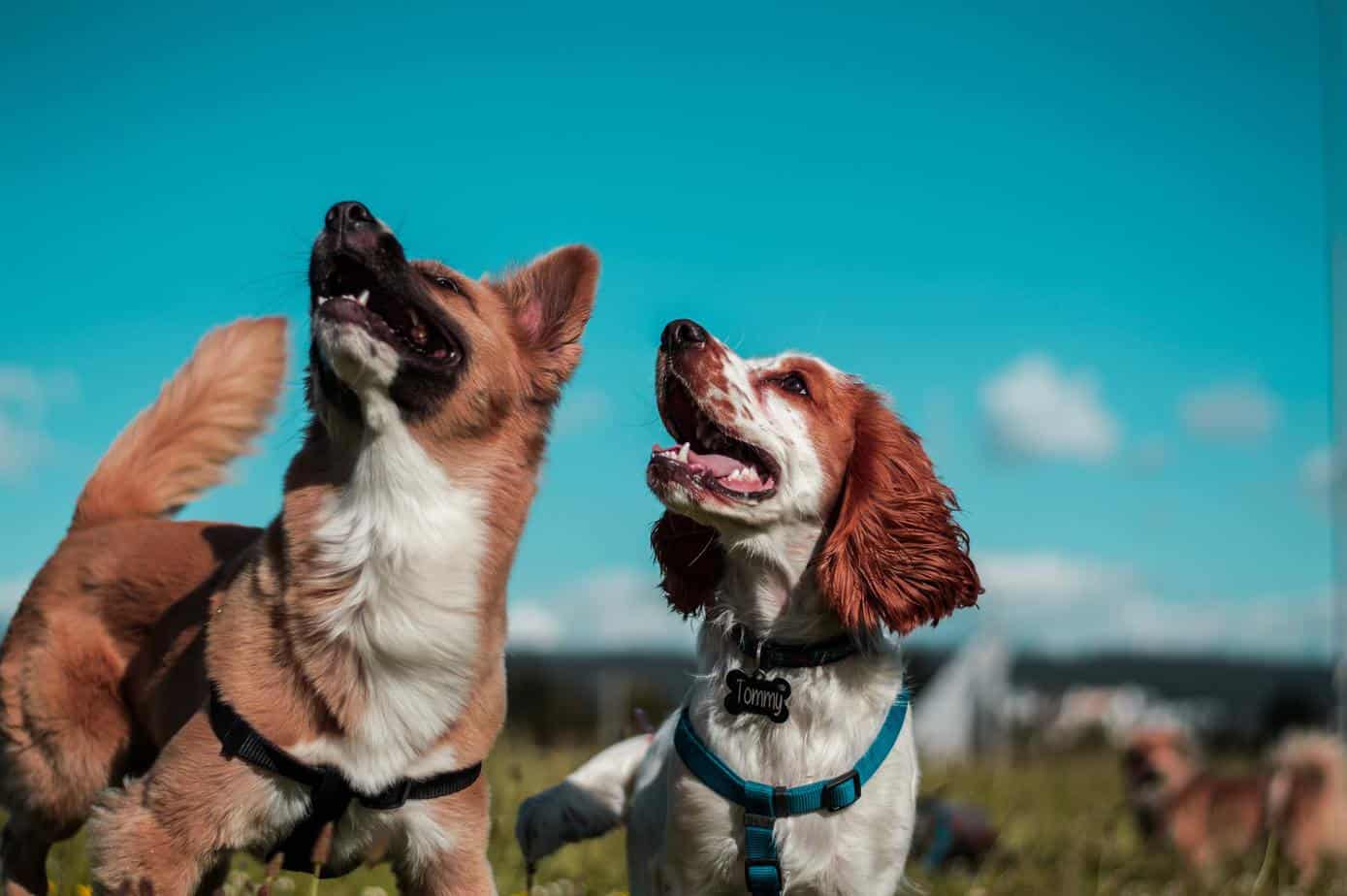
One thing to consider when thinking about breeds is if you want to go for the mixed breed or mutt or more for the pure bread dog.
There are different advantages to both. Generally mutts have less health issues because the more diverse gene pool strengthens their health, but with a pure breed, you can know with more exactly what type of personality your dog is likely to have, and where they’ve come from. For more on this, we recommend reading our full guide, on Should I Get a Purebred or Mixed Dog? How to Decide.
It’s likely that where you get your dog will weigh in on this part of choosing a breed. If you adopt, there’s a good chance the rescue centers will not know exactly what mix of breeds the dog you get is. And if you go for a pure breed, you’ll likely need to find a specific reputable breeder to ensure the dog’s lineage is pure.
How Important is Choosing a Specific Breed?
For a personal story… The love of my life is a black poodle mix named Olivia. When I pulled up to the rescue organization where I adopted her with my husband, we had our hearts continent on a Yorkshire Terrier. Growing up with them, I knew the breed well and loved their sassy personalities. They were easy to travel with and were usually incredibly affectionate. It was just our luck that the rescue had recently inherited sixteen Yorkshire terriers from a breeder that had recently passed. We were ecstatic! That gave us the opportunity to meet sixteen Yorkies who could mesh well with our family.
Luckily for me, the rescue owner had other plans in mind. She had a little, black poodle mix that was an owner surrender. She was not even viewable on the website or posted about on their social media pages. Our rescue owner said she was waiting for the perfect home for her.
With a heart for poodles, our fairy dogmother played matchmaker for us and found us our doggy soulmate. She showed us a poodle mix, the Pekinese, two Yorkies, and a cocker spaniel. All were lovely dogs, but Olivia really chose us to be her parents. She wouldn’t leave our laps and already seemed at home with us.
Don’t get me wrong, even though we loved her, it still felt like a tough decision to make. We didn’t know anything about the breed and we questioned if we made the right choice. After about a week though, all doubt was gone. It was spectacular how easy the transition was for us. Part of playing matchmaker is finding a dog that fits in so well with your home life, that the transition is easier on both of you.
Smaller + Miniature Breeds
From purse dwelling Chihuahuas to yappy Pomeranians, just because the come in a small package doesn’t mean these pups aren’t just as sassy, stubborn, or playful as their bigger bred counterparts. Some of the most popular small breeds in the United States include:
- Yorkshire Terrier
- Pomeranian
- Poodle
- French Bulldog
- Beagle
- Maltese
- Dachshund
- Cavalier King Charles Spaniel
- Chihuahua
- Shih Tzu
- Schnauzer
- Rat Terrier
- Pug
- Schnauzer
- Bichon Frise
Whether you live in a tiny space or your prefer a portable pup, small breed dogs have their own unique set of challenges and advantages. While the low maintenance chihuahua might work out wonderfully for a retiree in a condo, chihuahuas may not exactly thrive in a farm environment with a family with young kids. Luckily, for those who want a smaller companion animal, there are many family friendly varieties. Let’s take a look at what make small breeds great pets.
- Easily Portable. Owning a small dog is great when you want to getaway for the weekend and take your pup with you. There are great dog-friendly destinations like Austin, Texas or Asheville, North Carolina that cater to your pup. Small dogs have an advantage though. They are easier to control in large crowds or when they are done walking for the day by scooping them up and carrying them. Being able to carry your pup to maneuver through crowded streets and shops is a plus.
- Easier on Renters. Depending on the rental company, many have made a rule for their properties that state dogs cannot weigh over 30 pounds. While this may be great for those who happen to live underneath a family with Great Danes, many people who own larger breeds may face disappointment at their potential living prospects. Those with small breeds who don’t own their home may have an easier time finding housing or even dog friendly hotels.
- Perfect for Companionship. There’s not much that puppy snuggles can’t fix. For those looking for a true lapdog, particularly the kind that liked to be carried and babied, small breeds take the cake. Perfect for those looking for snuggle buddies, small breeds with lower energy like Pekingese and Pugs make great low-maintenance lap dogs.
One final note about small dogs: beware of anyone attempting to sell you a “teacup” breed. While Yorkies and Poodles are naturally small, breeding them to the point that they are less than four pounds or so at their full grown adult weight is dangerous. Typically, these breeding practices are questionable at best and usually breed health problems into the dog. No breeder can guarantee size. If size is a particular issue try adopting a full grown pup from a breeder-specific rescue organization.
Larger Breeds
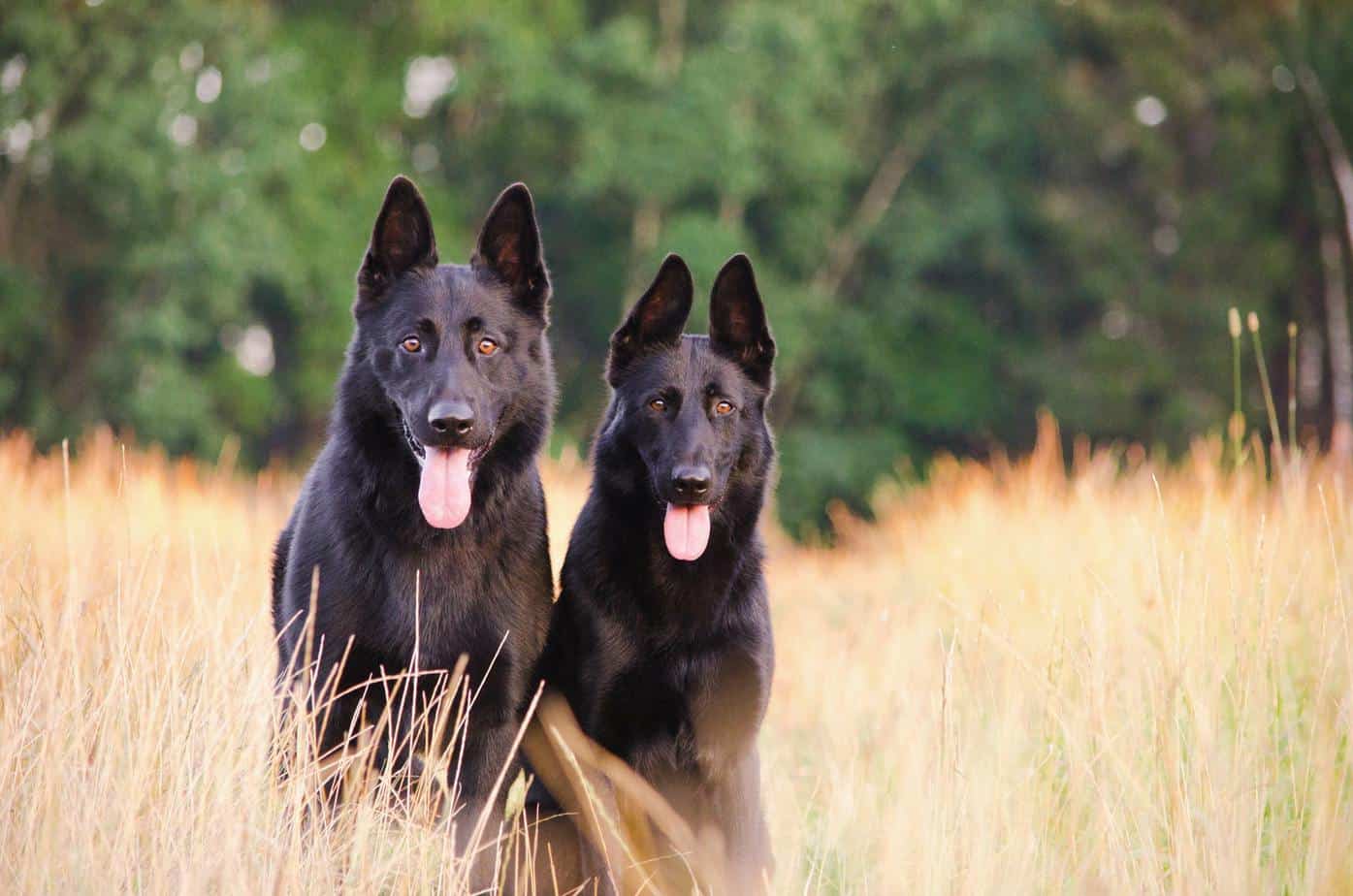
Some of the most common dogs in the United States are large breed dogs, and for good reason. Their sturdier build make them perfect for those with small children, people who regularly bring their dogs along on outdoor adventures, and those looking to protect their property and family. Larger dogs range from goofy and loveable like the Labrador Retriever to smart and agile like the Border Collie. The range of personalities and activity levels mean larger breeds truly provide a fit for all families. Let’s look at some of the most common large breed dogs in America.
- Border Collie
- Golden Retriever
- Golden Retriever Mix Breeds
- German Shepherd
- Huskie
- Labrador Retriever
- Standard Poodle
- American Pit Bull Terrier
- Boxer
Have you always dreamed of one day bringing home a Bernese Mountain Dog puppy and watching it grow? Or do you have a heart for the American Pit Bull Terrier and dream of rescuing one? Large dogs make great pets for pet owners who take the time to properly socialize and train their animals. Because you can’t scoop up a Golden Retriever the same way you can a Shih Tzu means teaching your pup not to plow down the neighborhood children out of sheer excitement is incredibly important.
While all dogs should display proper puppy manners, larger dogs can appear more aggressive (especially breeds like German Shepherds and Rottweilers) to those who may not be as familiar with dogs. Another important note for those considering larger breeds is making sure financially you can afford their heftier vet bills, food needs, large dog gears (e.g. large dog beds), and health care costs. But owning a large dog is a must for many families and for a good reason: they truly make wonderful pets. Let’s take a look at what makes them so wonderful to bring into your family
- Family Friendly. If you’re in a family with young children, rough housing with a playful and patient Labrador Retriever is a lot different than say a sleepy Pekingese. Not to mention, family friendly breeds like Border Collies and Bernese Mountain Dogs love to play with the human siblings so helpfully they can wear each other out. Sturdier breeds means less risk of injury for your fur children by your human children.
- Protective Nature. We’ve all heard the heroic stories of the German Shepherds (And other large breeds) protecting their families from fires, nefarious strangers, natural disasters, and burglary attempts. Large breed dogs are great for protection simply because most criminals won’t attempt to break into a house where they could be injured or caught. Not to mention, naturally protective breeds like Akitas and Rhodesian Ridgebacks means single men and women living alone can feel safer in their surroundings.
- Naturally Active. Have you ever seen someone train for a marathon with Shih Tzu? Active larger breeds like Labs and Goldens mean a companion when you hit the trails, the beach, the woods, or the track for your next adventure.
Giant Breeds
- Bernese Mountain Dog
- Great Pyrenees
- Tibetan Mastiff
Rare Dog Breeds
Maybe your next door neighbor had a Finnish Spitz or perhaps your beloved aunt favored the Catahoula Leopard Dog. Either way, you have fallen in love with a rare dog breed. With over 190 dog breeds recognized by the American Kennel Club, there are a handful that even the most devoted dog lover would overlook. Here is a look at some of the rarest dog breeds to choose from:
- Finnish Spitz
- Catahoula Leopard Dog
- Otterhound
- Chinook
- Norwegian Lundehund
- Skye Terrier
- Wolf Hybrid
These animals are usually seen trotting alongside their distant genetic cousins at the Westminster Dog Show, but what is it like to own one? There are plenty of perks to these purebred pups.
For example, owning a Tibetan Mastiff means you have a pretty good idea of what your pup’s personality and physical traits will be. If we look at the Tibetan Mastiff, we know they can average between 100 and 150 pounds. This means they will definitely needs lots of room and will probably not be a good fit for apartment dwellers. Tibetan Mastiffs were bred as protection animals and are typically stubborn animals.
With that being said, those who adopt the mastiff will have to ensure they are properly socialized and have obedience training. Having a stubborn Maltese is a lot different than having a stubborn Tibetan Mastiff. Because of their sheer size and protective nature, we can gather that these animals would not thrive with a first time dog owner.
However, while it may seem cool to purchase a New Guinea Singing Dog at first, there are a few pitfalls when adopting these purebreds.
- Target for Thieves. Purebreds, especially rare breeds, can be targeted by thieves hoping to make a quick buck. Sadly, the American Kennel Club have tracked these thefts, showing an alarming increase in reported cases. The best thing you can do to protect your pet is microchip them. Also be sure to keep an eye on them in the backyard and never leave them unattended in public places.
- Potential Health Issues. One downside to purebred pups is the inherited health issues that plague many breeds. For example: Yorkshire Terriers are notoriously expensive due to eye and knee issues. The rare purebred Bedlington Terrier are at higher risk for eye issues such as retinal dysplasia and liver disease.
- Sticker Shock. Remember when we talked about the mighty Tibetan Mastiff? You might think to yourself, as a seasoned dog owner with a nice plot of land, that you might look into purchasing one of these beautiful dogs. It will probably set you back around $3,000. Even the pint-sized purebred Bedlington Terrier’s average purchase price is around $1,500. Bringing home a rare breed, or even a purebred pup, could cost you a pretty penny, usually hovering around $1,000. If cost doesn’t dissuade you, make sure your investment comes with papers from the American Kennel Club. Also make sure you are working with a reputable and responsible breeder, which can be found on the American Kennel Club database.
Hypoallergenic Breeds
Those with allergies know how sucky it can be to give up the things you love in order to not, you know, feel physical pain. I absolutely love cats, but my eyes swell up, my skin breaks out into hives, and my throat itches if I come into contact with one. Luckily, there are a few options for those who suffer from the telltale signs of itchy and watering eyes, perpetual sniffles, and sneezing more often than most people in a lifetime.
First of all, let’s chat about what a hypoallergenic dog means. There is no such thing as a 100% allergy friendly dog. However, there are certain breeds that produce less dander and don’t shed as much as say, your neighbor’s golden retriever. These dogs are reliably less problematic in allergy sufferers. According to the American Kennel Club these dogs include:
- Soft Coated Wheaten Terriers
- Bichon Frise
- Giant and Standard Schnauzers
- Chinese Crested
- Poodles
- Maltese
- Portuguese Water Dogs
- Irish Water Spaniel
Traits of Hypoallergenic Dogs
- Practice Puppy Hygiene. Depending on what part of the country you live in, spending time outdoors with your pup can worsen your allergies. Once a year in the southeast, our entire state is covered in yellow pollen. It clings to your cars, and unfortunately for me, to my pup’s coat as well. Bathe your pup (up to once a week) to remove allergens and debris like dander, dust, pollen, and plant matter.
- Breathe Easier. When adding a new pup into your home change your air filters more frequently to keep the dander out of the air. Make sure to regularly clean the fan blades on ceiling fans and box fans as well. You can also launder your curtains, rugs, throw blankets, and the dog’s favorite things to lay on to keep the dander in check as well.
- Don’t Forget the Floors. If you have carpeting, your vacuum will become your new best friend. Vacuuming wherever the dog frequents most (the bedroom or living room, for example), will keep the dander and debris from settling into your carpet. Also, dust and dander can collect in the little groves of baseboards, so regularly wipe those down as well.
- Wipe Your Paws. Because I have some seasonal allergies, I regularly have to wipe down my pup’s paws with a grooming wipe after our walks. This keeps her from tracking pollen and plant matter into our home.
- The Sleeping Situation. Cuddling up with your pup may be the perfect way to unwind after a long day. However, it may not be a great solution for those with allergies. Keeping your bed a dog-free zone may keep the dander and dust off your pillow and bedding to help you breathe easier. If you can’t imagine a night without snuggling your pup, then try at least keeping them off pillows and frequently laundering your bedding.
While these pups will help those with sensitive allergies, they still might track allergens into your home. It’s important to implement certain tips and tricks to keep your allergies from attacking.
A Word about Committing to a Breed
It’s totally OK to have a preference, or to go into the dog search open minded! For us, we preferred a young, moderately active male Yorkie. We ended up with a young, moderately active female poodle mix.
Your perfect dog may be a hound instead of a lab, or a huskie instead of a german shepherd. Don’t get too caught up in the breed to make sure you don’t miss out on something truly special.
For more reading and preparing to get your dog, we recommend you check out our suggestions for the best books for new dog owners, and/or our suggestions for books we think every dog owner should have. If you plan to get a German Shepherd, check out the best dog food for German Shepherd puppies.
Continue reading:
What You Need to Know Before Rescuing a Dog
How to Find a Reputable Breeder (and Avoid Puppy Mills)
How to Figure Out Your Dog’s Age

